Different Types of Soil Moisture Sensors
There are a variety of soil moisture sensors on the market, how should we choose the soil moisture sensor?
Keeping soil moisture balanced is of great importance to the healthy growth of plants since soil moisture has a direct impact on plants’ respiration and photosynthesis. There are a variety of soil moisture sensors on the market. This article will walk you through how to differentiate various types of soil moisture sensors and choose the most suitable one.
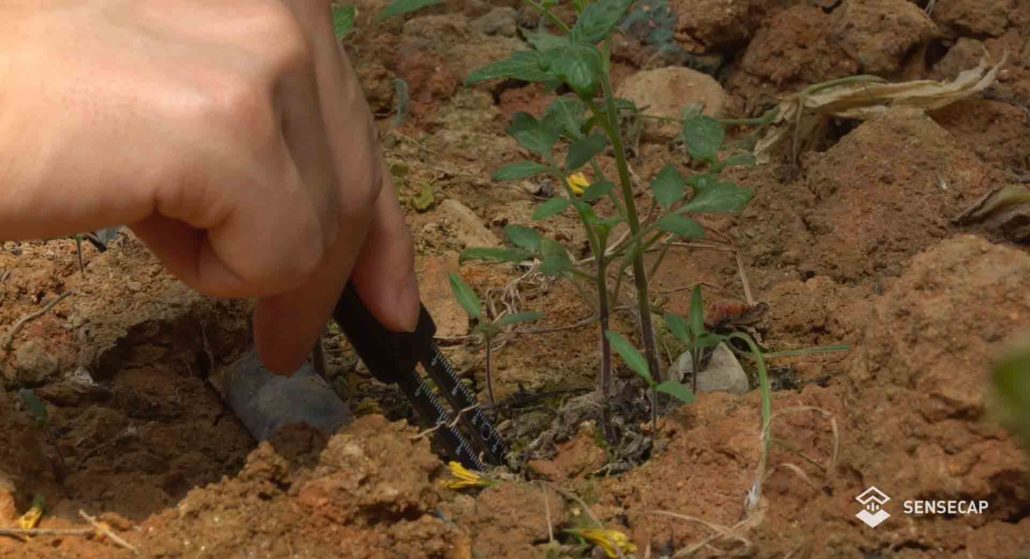
There are three most popular measurement principles: Capacitive, TDR and FDR.
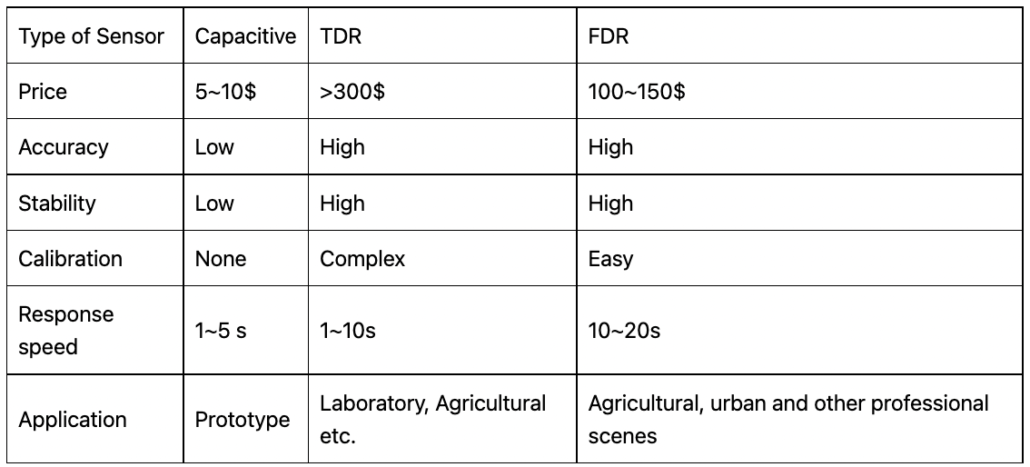
Capacitive
The capacitive soil moisture sensor detects moisture through the moisture sensitive capacitor. It uses a special material, the material changes the permittivity by absorbing the moisture in the environment, and the capacitance value of the capacitor changes. The sensor converts the capacitance value into an electrical signal and outputs a percentage value to monitor moisture. This sensor is often built as a prototype product, if used as a professional measurement, measurement data is not accurate and reliable.
If you just need to prototype, consider buying this type of sensor. Please refer to this one.
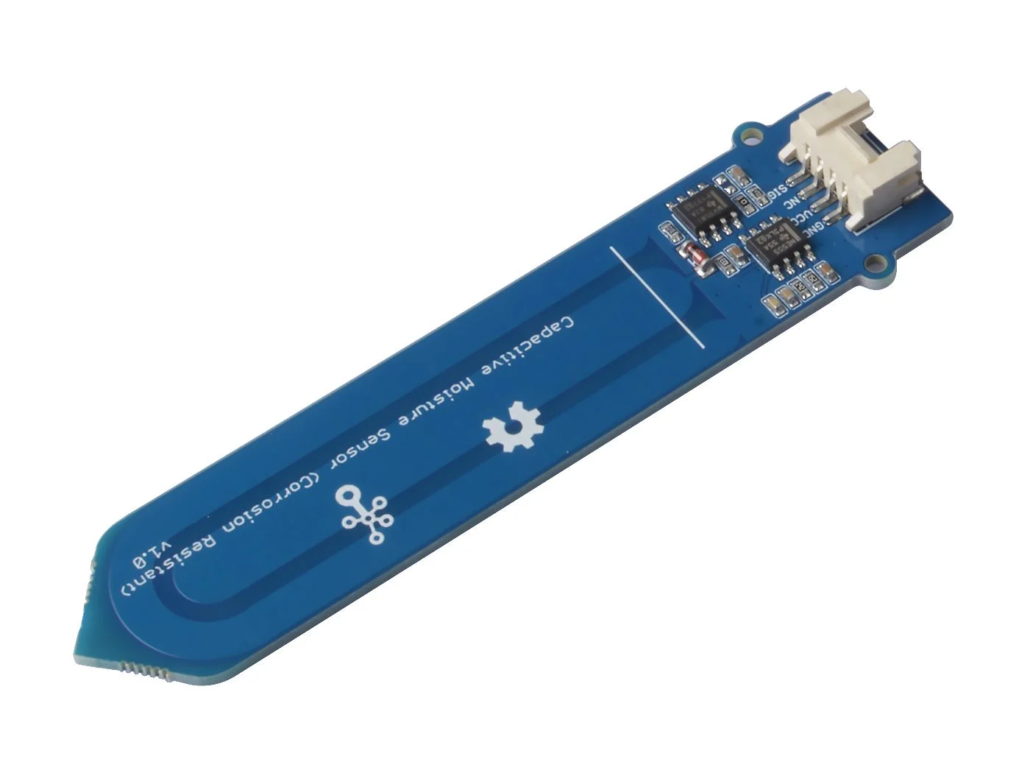
TDR
Like a radar system, TDR(Time Domain Reflectometry) uses a crystal oscillator to generate high-frequency signals that are transmitted to a metal probe. At this point, the generated signal and the returned signal will be superimposed, and then the amplitude of the signal will be measured and converted into soil moisture value.
The value that is measured in this process is the dielectric constant, and there is a correspondence between the dielectric constant of the soil and the soil moisture. For example, as moisture in soil increases, its dielectric constant increases correspondingly.
TDR has strong independence, its results are independent of soil type, density and temperature. Another important point is that TDR can measure soil moisture under freezing.
TDR sensors are complex in design and therefore expensive.
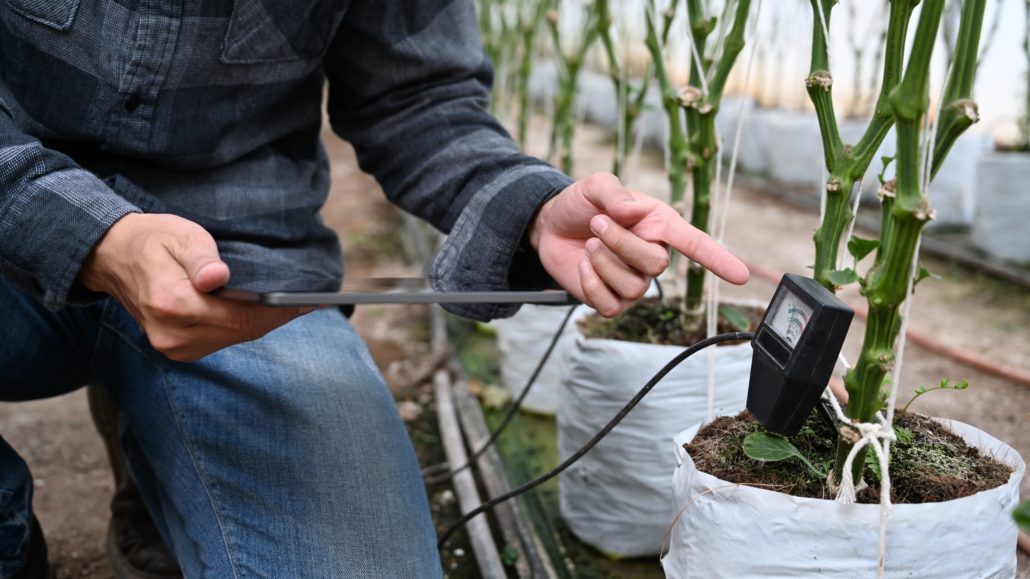
FDR
Since TDR equipment was expensive, in the late 1980s, many companies (such as AquaSPY, Sentek. Delta-t, Decagon) began to measure the moisture of soil in a simpler way than TDR — FDR (Frequency Domain Reflectometry).
FDR uses the principle of electromagnetic pulse, according to the electromagnetic wave propagation in a medium frequency to measure the apparent dielectric constant (ε) of the soil, so soil volumetric water content (θv) is obtained.
Compared with TDR test principle, FDR has almost all the advantages of TDR, FDR is not only cheaper than TDR, but also has a shorter measurement time, high measurement accuracy after a specific soil calibration, and the shape of the probe is not limited, can be measured at multiple depths at the same time, data acquisition implementation is easier.
FDR has the advantages of simple, safe, fast and accurate, long-term measurement, wide range, and simple calibration. It is a kind of soil moisture measurement instrument worth recommending.
S2104/S2105 is a wireless soil moisture sensor based on FDR principle. It is cheap and stable in performance, and can monitor soil remotely and long-term. You can refer to this sensor.
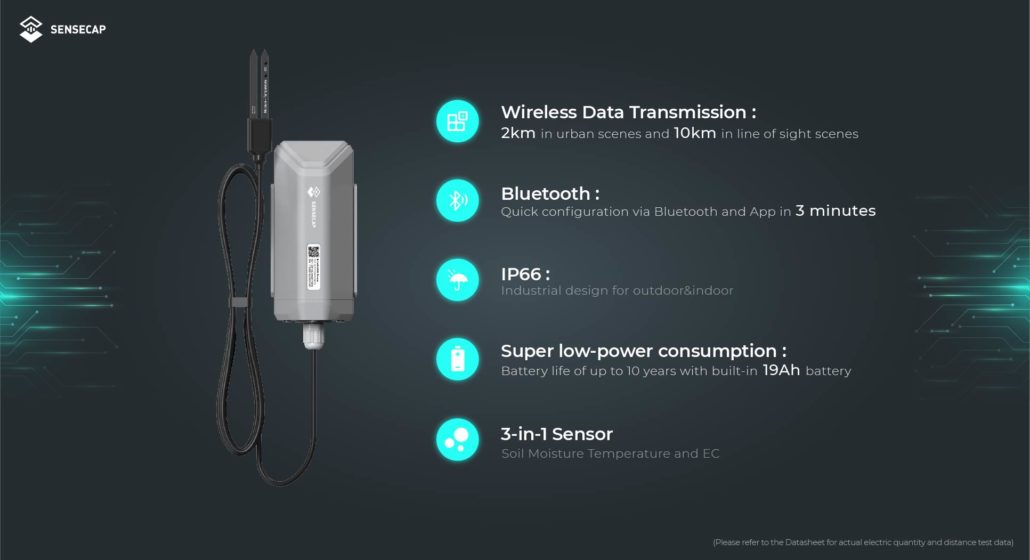
Sensors wirelessly upload soil data to the web or mobile App. Users can remotely monitor soil data through their phones and export historical data for analysis.
The SenseCAP S210X provide a variety of wireless sensors and is battery-powered for up to 10 years in outdoor environments.
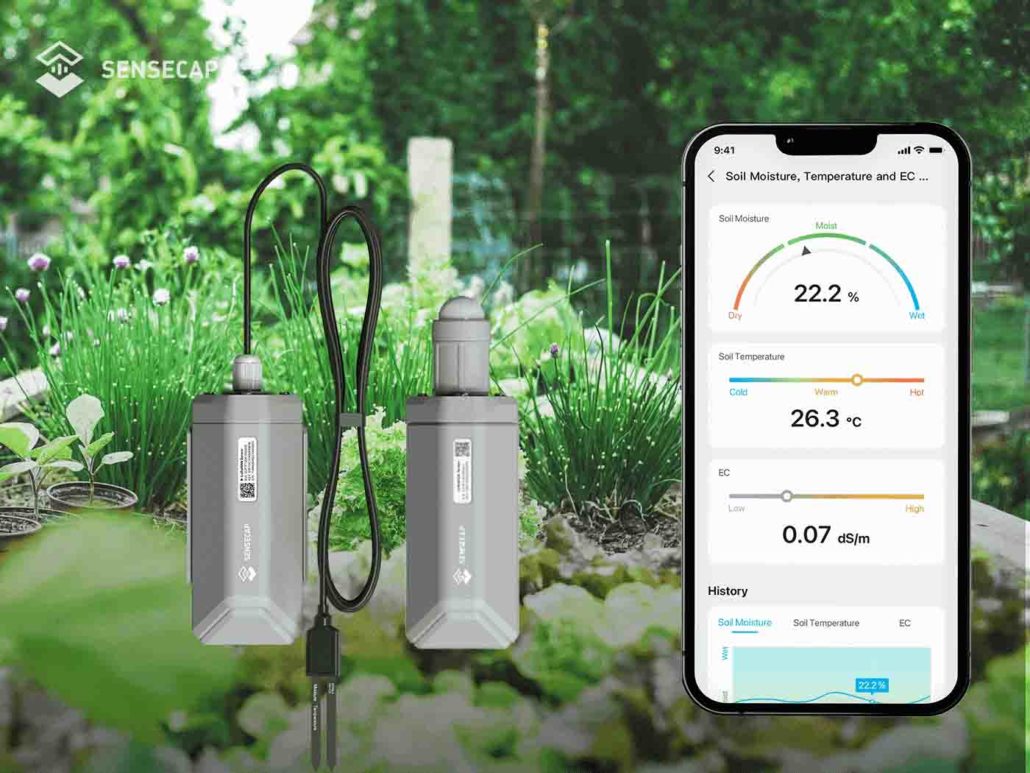
Here’s the newest video of the SenseCAP S210x Series unboxing and shows how to deploy in your area
That’s it for this post. As always, we can’t wait to see what you make. Shoot us a tweet @seeedstudio, or let us know on LinkedIn, Discord, or publish your project on our Project Hub on Hackster. Please be safe out there, be kind to one another, and we’ll see you next month with even more exciting news!
Author:Jenkin Lu
Why 0.1% resolution at 3% accuracy and 0.5% resolution at 5%accuracy?
BTW, 5% accuracy is not “high accuracy”.
That’s because the saturated moisture content of most soils is about 60%, so higher precision measurements are needed at 0-50%. And when 50~100%, the accuracy is reduced appropriately. The calibration of 50~100% is more difficult, and the water content in this interval is less in practical application